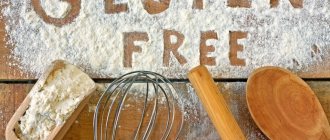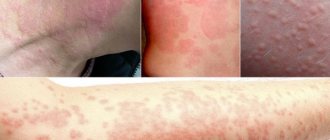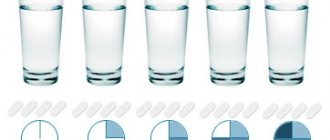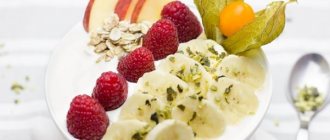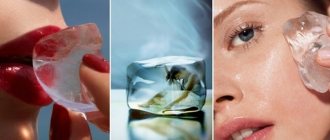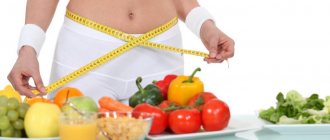29.01.2021 09:00
1254
The lipid-lowering diet is both a figure correction method and a health-improving technique. It is aimed at normalizing cholesterol levels in the blood, which is often the cause of excess weight, as well as the development of coronary heart disease and heart attack.
The lipid-lowering diet is both a figure correction method and a health-improving technique. It is aimed at normalizing cholesterol levels in the blood, which is often the cause of excess weight, as well as the development of coronary heart disease and heart attack. The nutritional system for certain indications is prescribed by a doctor, and it is not recommended to use it for weight loss.
General rules
Hyperlipoproteinemia is a symptom complex that is accompanied by excessive levels of lipids in the blood. Lipids are organic substances that, along with proteins and carbohydrates, are present in the body. The components of lipids are triglycerides , fatty acids , free cholesterol and its esters, and phospholipids .
In different diseases, the levels of lipid components change to varying degrees. With diabetes mellitus, most patients experience increased levels of triglycerides , and to a lesser extent cholesterol and LDL levels increase. In obesity , elevated levels of triglycerides , cholesterol and LDL are detected. Hypothyroidism is also accompanied by an increase in the level of atherogenic lipoproteins and a decrease in HDL.
The most common is hypercholesterolemia , which is found in 40-60% of the adult population. Its role in the development of cardiovascular diseases has been proven and a direct connection has been shown between increased cholesterol levels and mortality from these diseases.
Cholesterol in protein-bound form is transported to tissues. Low-density lipoproteins are the main carriers of it to tissues, so they are considered the main atherogenic lipoprotein, that is, playing a role in the development of atherosclerosis . High-density lipoproteins absorb free cholesterol and are a factor that counteracts the development of atherosclerosis.
The cause of hypercholesterolemia is a sedentary lifestyle, poor diet (excess animal fats and carbohydrates), smoking, and emotional overload. For any lipid metabolism disorders, a therapeutic lipid-lowering diet is recommended.
What is a therapeutic lipid-lowering diet? This is a diet aimed at reducing blood lipid levels. Its most important condition is the qualitative and quantitative correction of the fat part of the diet.
An important part of the diet consists of fresh and frozen vegetables, herbs and leafy salads.
The diet is limited to foods containing cholesterol and saturated fats (animal fats). Exclude butter, chocolate, cheese, sausages, pork, lard. At the same time, the content of polyunsaturated fats increases - various vegetable oils are used: corn, sunflower, olive, soybean, flaxseed.
The lipid-free diet has the following principles:
- Fractional meals (5-6 times).
- Reducing the amount of animal fats. To do this, you initially need to choose lean meat and fish and additionally remove visible fat. You can reduce the fat content in the product by pre-boiling and steaming or baking.
- Introduction of protein products (low-fat fish and poultry, low-fat dairy products, egg whites).
- Limiting simple carbohydrates (sweets, sugar, jam, confectionery), which are stored in the body as fat.
- Half of the calorie intake consists of complex carbohydrates (vegetables, berries, fruits, cereals, dried fruits). You need to eat 400-500 g of raw vegetables and fruits, one serving of porridge and 200-300 g of whole grain bread per day. All these products are sources of fiber, which is necessary to improve intestinal motility and remove excess cholesterol .
- Consumption of vegetable fats.
- Drink plenty of water (2 liters of water per day).
- Limit the number of yolks to 3 per week.
- The main method of cooking is boiling or steaming. Dishes in batter, deep-fried and breaded are completely excluded.
A table containing recommended and prohibited foods will help with proper nutrition.
| Allowed | Prohibited |
| Fresh and frozen vegetables, herbs and leafy salads. | Internal organs of animals and birds. |
| Peeled fruits, dried fruits, nuts and seeds. | Chocolate, ice cream, candies and other sweets, sugar, jam, jams. Limit the consumption of honey. |
| Cereals, bread (preferably with bran, rye, whole grain). | Baked goods (rolls, pies, cookies, crackers), pastries with cream, pasta, semolina, limit the consumption of white rice. |
| Vegetable oils: olive, corn, flaxseed, walnut, soybean, rapeseed. | Cooking fats, lard, all animal fats. |
| Sea fish, including fatty fish, kelp. | Crayfish, shrimp, canned fish, fish roe. |
| White poultry, beef. | Fatty meats, brisket, poultry skin and red meat, smoked meats and sausages, duck and goose meat. |
| Low-fat dairy products. | Fat cottage cheese, sour cream, cream and other high-fat dairy products. |
| Any juices, fruit drinks, decoctions of dried fruits, green tea, ginger tea, herbal tea. | Alcohol and carbonated drinks. |
A low-lipid diet can also be used to lose weight if you are overweight, even when there are no changes in blood tests. In this case, an antilipid diet is used prophylactically, since excess weight is a risk factor for elevated LDL cholesterol.
Weight loss is the first significant step to normalize lipid metabolism. The composition of the products does not differ, the difference is that the therapeutic diet for illness should be carried out for a long time (or constantly), and in case of increased weight it can be used until the desired weight is reached with a transition to a healthy diet.
Since the diet is balanced, you can stick to it constantly. A balanced, varied diet and the absence of significant restrictions will contribute to slow weight loss (up to one kilogram per week) with increased physical activity. For obesity, fasting days are indicated.
To reduce cholesterol levels, you need to additionally introduce foods into your diet that help reduce cholesterol levels:
- garlic;
- olive, flaxseed, nut, sesame, amaranth oil;
- fish fat;
- avocado;
- blackberries, chokeberries, strawberries, cranberries, red grapes, lingonberries;
- flax seeds, fenugreek, milk thistle and sesame seeds;
- fatty sea fish;
- seaweed;
- fruit juices;
- legumes (chickpeas, beans, lentils, soybeans);
- soy products (tofu, miso).
The level of low-density cholesterol increases with constant psycho-emotional stress, so an effect on the nervous system is a prerequisite.
Relaxation, meditation and taking sedatives help lower cholesterol. A prerequisite for treatment is an increase in physical activity.
Why do you need to control your cholesterol levels?
Experts recommend constantly monitoring cholesterol levels. This compound of organic origin is similar in structure to lipophilic alcohols. Cholesterol enters the human body with food, and the biliary organ can synthesize it independently.
An organic compound in small quantities is vital; it has the following functions:
- ensuring normal synthesis of vitamin D and bile acids;
- participation in the processes of synthesis of estrogens, androgens, mineralocorticoids and glucocorticoids;
- strengthening the cytoplasmic membranes of cells (framework), ensuring their elasticity and resilience.
The above processes occur correctly in the human body if the cholesterol concentration does not exceed 5.3 mmol/l. With a repeated increase in the level of an organic compound, lipid metabolism in the body is disrupted.
Cholesterol does not dissolve in blood or water. Low-density lipoproteins (the so-called “bad” cholesterol) are considered the most dangerous for the human body. They accelerate the formation of fatty plaques on the vascular walls, which increases the likelihood of developing atherosclerosis.
Authorized Products
Standard lipid-lowering diet, list of products:
- Fresh fruits and vegetables. They are best eaten raw and used as a side dish. Preference is given to low-carbohydrate vegetables (all types of cabbage, zucchini, pumpkin, squash, eggplant, cucumbers, avocado, sweet peppers, green peas, tomatoes). Healthy fruits include: persimmon, kiwi, grapefruit, pomegranates, oranges, apples and pears. Pay attention to fruits with a high content of pectins - these are citrus fruits, apples, grapes, cranberries, dried apples, dogwood berries, viburnum. Pectins normalize intestinal function, improve metabolism, absorb cholesterol and remove it.
- Juices: orange, grapefruit, apple, beetroot and carrot.
- Fish and seafood. They should form the basis of the diet for hypercholesterolemia. You need to eat lean fish, and if you have hypercholesterolemia, include fatty varieties in your menu 2 times a week: mackerel, flounder, herring, salmon, salmon. Fish roe and squid are limited due to their high cholesterol content.
- Sea kale. This product is rich in microelements (iodine, selenium) and fiber.
- Legumes as a source of vegetable protein and fiber. Can be included in your diet daily.
- Sesame seeds, fenugreek, flax, rice bran. Their benefits are considered in two aspects: they are sources not only of fiber, but also of phytosterols and oils, which together help in the fight against the disease. Corn, soybean and rapeseed oil, and almonds are also high in phytosterols. They are also found in vegetables and fruits. The shortage of their supply is noticeable in the winter and spring, due to a decrease in their consumption. At the same time, the share of consumed livestock products increases. During this period, it is advisable to additionally consume food products enriched with phytosterols, which are isolated from plant materials thanks to special technologies (for example, Danakor kefir, and “preventative 120/80”).
- Scientists have also proven that with the use of phytosterols, there is a decrease in the production of cortisol , which negatively affects the state of the cardiovascular system (increases the tone of the vessels and the strength of heart contractions, helps to increase blood pressure), retains sodium and water in the body.
- Soy and textured soy products. They are a source of protein and contain no cholesterol. If its level is high, patients are recommended to replace meat with soy products.
- Garlic is a natural statin . To get results you need to use 2 cloves daily for 3 months. Such treatment cannot be undertaken for gastrointestinal diseases.
- Vegetable first courses (cabbage soup, various soups, beetroot soup, borscht). They should be cooked in water. And add a minimum of vegetable oil.
- Lean meat and poultry. It is enough to use them 1-2 times a week. Turkey meat and chicken breast are considered dietary. The meat is boiled before cooking, and then you can bake it.
- Rye, grain, bran bread, crispbread and soy flour bread. As confectionery baked goods, you can use savory cookies and bran bread.
- Dairy products, cottage cheese and low-fat cheeses. Not too fatty sour cream can only be used in dishes.
- 3 whole eggs per week, and unlimited chicken whites.
- The list of products is complemented by cereals. You can eat buckwheat, oatmeal, and boiled brown rice in moderation. With obesity, the frequency of porridge consumption decreases.
- Unrefined vegetable oils. They are used to season ready-made dishes. You can eat 2 tbsp per day. l. Sesame, flaxseed, soybean, olive, and corn are useful.
- Nuts (almonds, walnuts, pine) and seeds. They contain healthy monounsaturated fats, but due to their high calorie content, the amount is limited to 20-30 g per day.
- Oatmeal broth or jelly, since oats help reduce cholesterol, excess weight and normalize lipid metabolism.
- Green tea with lemon, tea with ginger, rosehip infusion, degassed mineral water, juices.
Table of permitted products
| Proteins, g | Fats, g | Carbohydrates, g | Calories, kcal | |
Vegetables and greens | ||||
| greenery | 2,6 | 0,4 | 5,2 | 36 |
| eggplant | 1,2 | 0,1 | 4,5 | 24 |
| beans | 6,0 | 0,1 | 8,5 | 57 |
| zucchini | 0,6 | 0,3 | 4,6 | 24 |
| cabbage | 1,8 | 0,1 | 4,7 | 27 |
| broccoli | 3,0 | 0,4 | 5,2 | 28 |
| boiled cauliflower | 1,8 | 0,3 | 4,0 | 29 |
| bulb onions | 1,4 | 0,0 | 10,4 | 41 |
| carrot | 1,3 | 0,1 | 6,9 | 32 |
| cucumbers | 0,8 | 0,1 | 2,8 | 15 |
| salad pepper | 1,3 | 0,0 | 5,3 | 27 |
| salad | 1,2 | 0,3 | 1,3 | 12 |
| beet | 1,5 | 0,1 | 8,8 | 40 |
| celery | 0,9 | 0,1 | 2,1 | 12 |
| soybeans | 34,9 | 17,3 | 17,3 | 381 |
| asparagus | 1,9 | 0,1 | 3,1 | 20 |
| tomatoes | 0,6 | 0,2 | 4,2 | 20 |
| Jerusalem artichoke | 2,1 | 0,1 | 12,8 | 61 |
| pumpkin | 1,3 | 0,3 | 7,7 | 28 |
| beans | 7,8 | 0,5 | 21,5 | 123 |
| garlic | 6,5 | 0,5 | 29,9 | 143 |
| lentils | 24,0 | 1,5 | 42,7 | 284 |
Fruits | ||||
| avocado | 2,0 | 20,0 | 7,4 | 208 |
| oranges | 0,9 | 0,2 | 8,1 | 36 |
| pomegranate | 0,9 | 0,0 | 13,9 | 52 |
| grapefruit | 0,7 | 0,2 | 6,5 | 29 |
| pears | 0,4 | 0,3 | 10,9 | 42 |
| kiwi | 1,0 | 0,6 | 10,3 | 48 |
| lemons | 0,9 | 0,1 | 3,0 | 16 |
| mango | 0,5 | 0,3 | 11,5 | 67 |
| tangerines | 0,8 | 0,2 | 7,5 | 33 |
| nectarine | 0,9 | 0,2 | 11,8 | 48 |
| peaches | 0,9 | 0,1 | 11,3 | 46 |
| apples | 0,4 | 0,4 | 9,8 | 47 |
Berries | ||||
| gooseberry | 0,7 | 0,2 | 12,0 | 43 |
| Red currants | 0,6 | 0,2 | 7,7 | 43 |
| black currant | 1,0 | 0,4 | 7,3 | 44 |
Nuts and dried fruits | ||||
| nuts | 15,0 | 40,0 | 20,0 | 500 |
| cashew | 25,7 | 54,1 | 13,2 | 643 |
| sesame | 19,4 | 48,7 | 12,2 | 565 |
| flax seeds | 18,3 | 42,2 | 28,9 | 534 |
| fenugreek seeds | 23,0 | 6,4 | 58,3 | 323 |
| sunflower seeds | 20,7 | 52,9 | 3,4 | 578 |
Cereals and porridges | ||||
| buckwheat (kernel) | 12,6 | 3,3 | 62,1 | 313 |
| oat groats | 12,3 | 6,1 | 59,5 | 342 |
| cereals | 11,9 | 7,2 | 69,3 | 366 |
| millet cereal | 11,5 | 3,3 | 69,3 | 348 |
| barley grits | 10,4 | 1,3 | 66,3 | 324 |
Raw materials and seasonings | ||||
| honey | 0,8 | 0,0 | 81,5 | 329 |
Dairy | ||||
| skim milk | 2,0 | 0,1 | 4,8 | 31 |
| natural yogurt 2% | 4,3 | 2,0 | 6,2 | 60 |
Cheeses and cottage cheese | ||||
| cottage cheese 0.6% (low fat) | 18,0 | 0,6 | 1,8 | 88 |
| curd tofu | 8,1 | 4,2 | 0,6 | 73 |
Meat products | ||||
| beef | 18,9 | 19,4 | 0,0 | 187 |
| rabbit | 21,0 | 8,0 | 0,0 | 156 |
Sausages | ||||
| boiled diet sausage | 12,1 | 13,5 | 0,0 | 170 |
Bird | ||||
| chicken fillet | 23,1 | 1,2 | 0,0 | 110 |
| turkey | 19,2 | 0,7 | 0,0 | 84 |
Fish and seafood | ||||
| fish | 18,5 | 4,9 | 0,0 | 136 |
| squid | 21,2 | 2,8 | 2,0 | 122 |
| mussels | 9,1 | 1,5 | 0,0 | 50 |
| seaweed | 0,8 | 5,1 | 0,0 | 49 |
Oils and fats | ||||
| butter | 0,5 | 82,5 | 0,8 | 748 |
| linseed oil | 0,0 | 99,8 | 0,0 | 898 |
| olive oil | 0,0 | 99,8 | 0,0 | 898 |
| sunflower oil | 0,0 | 99,9 | 0,0 | 899 |
Non-alcoholic drinks | ||||
| mineral water | 0,0 | 0,0 | 0,0 | — |
| green tea | 0,0 | 0,0 | 0,0 | — |
| * data is per 100 g of product | ||||
Expert opinion
Dietitians consider a standard lipid-lowering diet to be an integral part of the treatment process for certain diseases, and therefore expect specific results from it. Moreover, its role is not the main one, but an auxiliary one; it is unlikely that you can recover from the disease simply by changing your diet.
It should be carried out under the supervision of a doctor, who will monitor the patient’s condition. Without this, sticking to any low-calorie diet for a long time is strictly contraindicated, especially since those losing weight cannot expect great results from a lipid diet.
Fully or partially limited products
Exclude:
- By-products (internal organs of animals and poultry).
- Fatty pork, lard, cooking oils, coconut oil, palm oil, brisket, poultry skin and red meat.
- Duck, goose, smoked meat and sausage.
- Crayfish, shrimp, canned fish and fish roe.
- Baked goods (rolls, pies, cookies, crackers), pastries with cream, pasta, semolina, limit the consumption of white rice.
- Any broths, fried foods.
- Fat cottage cheese, sour cream, cream and other high-fat dairy products.
- Alcohol and carbonated drinks.
- Chocolate, ice cream, candies and other sweets. Limit the consumption of honey, jam, jams.
Table of prohibited products
| Proteins, g | Fats, g | Carbohydrates, g | Calories, kcal | |
Vegetables and greens | ||||
| radish | 1,2 | 0,1 | 3,4 | 19 |
| white radish | 1,4 | 0,0 | 4,1 | 21 |
| red radish | 1,2 | 0,1 | 3,4 | 20 |
| black radish | 1,9 | 0,2 | 6,7 | 35 |
| spinach | 2,9 | 0,3 | 2,0 | 22 |
| sorrel | 1,5 | 0,3 | 2,9 | 19 |
Fruits | ||||
| bananas | 1,5 | 0,2 | 21,8 | 95 |
Berries | ||||
| grape | 0,6 | 0,2 | 16,8 | 65 |
Mushrooms | ||||
| mushrooms | 3,5 | 2,0 | 2,5 | 30 |
Nuts and dried fruits | ||||
| raisin | 2,9 | 0,6 | 66,0 | 264 |
Cereals and porridges | ||||
| semolina | 10,3 | 1,0 | 73,3 | 328 |
| white rice | 6,7 | 0,7 | 78,9 | 344 |
Flour and pasta | ||||
| pasta | 10,4 | 1,1 | 69,7 | 337 |
Confectionery | ||||
| jam | 0,3 | 0,2 | 63,0 | 263 |
| jam | 0,3 | 0,1 | 56,0 | 238 |
| candies | 4,3 | 19,8 | 67,5 | 453 |
| pastry cream | 0,2 | 26,0 | 16,5 | 300 |
| cookie | 7,5 | 11,8 | 74,9 | 417 |
Ice cream | ||||
| ice cream | 3,7 | 6,9 | 22,1 | 189 |
Cakes | ||||
| cake | 4,4 | 23,4 | 45,2 | 407 |
Chocolate | ||||
| chocolate | 5,4 | 35,3 | 56,5 | 544 |
Raw materials and seasonings | ||||
| mustard | 5,7 | 6,4 | 22,0 | 162 |
| mayonnaise | 2,4 | 67,0 | 3,9 | 627 |
Dairy | ||||
| milk 3.6% | 2,8 | 3,6 | 4,7 | 62 |
| milk 4.5% | 3,1 | 4,5 | 4,7 | 72 |
| cream | 2,8 | 20,0 | 3,7 | 205 |
| sour cream 25% (classic) | 2,6 | 25,0 | 2,5 | 248 |
Cheeses and cottage cheese | ||||
| cheese | 24,1 | 29,5 | 0,3 | 363 |
| cottage cheese 11% | 16,0 | 11,0 | 1,0 | 170 |
| cottage cheese 18% (fat) | 14,0 | 18,0 | 2,8 | 232 |
Meat products | ||||
| pork | 16,0 | 21,6 | 0,0 | 259 |
| pork liver | 18,8 | 3,6 | 0,0 | 108 |
| pork kidneys | 13,0 | 3,1 | 0,0 | 80 |
| pork fat | 1,4 | 92,8 | 0,0 | 841 |
| salo | 2,4 | 89,0 | 0,0 | 797 |
| beef liver | 17,4 | 3,1 | 0,0 | 98 |
| beef kidneys | 12,5 | 1,8 | 0,0 | 66 |
| beef brains | 9,5 | 9,5 | 0,0 | 124 |
Sausages | ||||
| smoked sausage | 16,2 | 44,6 | 0,0 | 466 |
| smoked sausage | 9,9 | 63,2 | 0,3 | 608 |
| sausages | 10,1 | 31,6 | 1,9 | 332 |
| sausages | 12,3 | 25,3 | 0,0 | 277 |
Bird | ||||
| smoked chicken | 27,5 | 8,2 | 0,0 | 184 |
| duck | 16,5 | 61,2 | 0,0 | 346 |
| smoked duck | 19,0 | 28,4 | 0,0 | 337 |
| goose | 16,1 | 33,3 | 0,0 | 364 |
Fish and seafood | ||||
| smoked fish | 26,8 | 9,9 | 0,0 | 196 |
| salted fish | 19,2 | 2,0 | 0,0 | 190 |
| Red caviar | 32,0 | 15,0 | 0,0 | 263 |
| black caviar | 28,0 | 9,7 | 0,0 | 203 |
| canned fish | 17,5 | 2,0 | 0,0 | 88 |
| cod (liver in oil) | 4,2 | 65,7 | 1,2 | 613 |
Oils and fats | ||||
| animal fat | 0,0 | 99,7 | 0,0 | 897 |
| cooking fat | 0,0 | 99,7 | 0,0 | 897 |
Non-alcoholic drinks | ||||
| instant coffee dry | 15,0 | 3,5 | 0,0 | 94 |
| black tea | 20,0 | 5,1 | 6,9 | 152 |
| * data is per 100 g of product | ||||
Menu for a standard lipid-lowering diet (Diet)
It is necessary to organize 5-6 meals a day so as not to feel the feeling of hunger that may arise due to calorie restriction. The right choice of meat and fish, the use of recommended cooking methods, the exclusion of “fast” carbohydrates and baked goods will affect your weight within a month. Taking into account all the recommendations, you can develop a menu for the week using fitness diet recipes.
| Breakfast |
|
| Lunch |
|
| Dinner |
|
| Afternoon snack |
|
| Dinner |
|
| For the night |
|
| Breakfast |
|
| Lunch |
|
| Dinner |
|
| Afternoon snack |
|
| Dinner |
|
| For the night |
|
| Breakfast |
|
| Lunch |
|
| Dinner |
|
| Afternoon snack |
|
| Dinner |
|
| For the night |
|
| Breakfast |
|
| Lunch |
|
| Dinner |
|
| Afternoon snack |
|
| Dinner |
|
| For the night |
|
| Breakfast |
|
| Lunch |
|
| Dinner |
|
| Afternoon snack |
|
| Dinner |
|
| For the night |
|
| Breakfast |
|
| Lunch |
|
| Dinner |
|
| Afternoon snack |
|
| Dinner |
|
| For the night |
|
| Breakfast |
|
| Lunch |
|
| Dinner |
|
| Afternoon snack |
|
| Dinner |
|
| For the night |
|
Reviews and results
The first result of a lipid-lowering diet is weight loss. It is possible to achieve normalization of cholesterol levels only after 3 months. This explains the minimum terms of adherence to the diet. The deadline for using this therapeutic nutrition is not limited and, when indicated, it must be observed constantly.
In general, this diet is assessed as a transition to a healthy diet and should become the rule for patients with increased weight and lipid metabolism disorders. Limiting simple carbohydrates and saturated fats has a positive effect on digestion and overall health.
- “... With hereditary hypercholesterolemia, I have to follow a very strict diet. Cholesterol began to rise in my teens, although I was thin. For me, animal fats and fried foods, white rice, sweets, and sugar were prohibited. I allowed myself 2 eggs a week, and then switched to boiled whites and egg white omelettes. And all this time I tried to play sports or just walk a lot. All this made it possible to live without drugs for up to 45 years, and then they were prescribed”;
- “...The low-lipid diet helped me lose weight. I followed it for 2 months. I liked it - the menu is free, you can eat unlimited fruits and vegetables, enough meat, cottage cheese and fish. I even ate some bread and bran crispbread, but mostly there were vegetable dishes. She tolerated the absence of sweets relatively well, as she replaced them with nuts and dried fruits. I started making yogurt myself and began using it as a salad dressing, sometimes replacing vegetable oil. With such a relative limitation, of course, you should not hope for rapid weight loss. I read the opinion of nutritionists that this is even better. Overall, I lost 5 kg in 2 months and continue to do so, although my weight loss has slowed down.”
Contraindications
Despite the many benefits of a lipid-lowering diet, it has some limitations in its use. This method for losing weight cannot be used during pregnancy and breastfeeding, since there is practically no milk in its menu. For the same reason, a lipid-lowering nutritional system is not recommended for children.
Contraindications to the use of this dietary method are insulin dependence (diabetes mellitus) and kidney, cardiovascular or nervous system diseases, as well as musculoskeletal diseases associated with calcium deficiency in the body (osteoporosis). Also, a lipid-lowering diet is not suitable in the presence of an acute or recurrent chronic disease.

